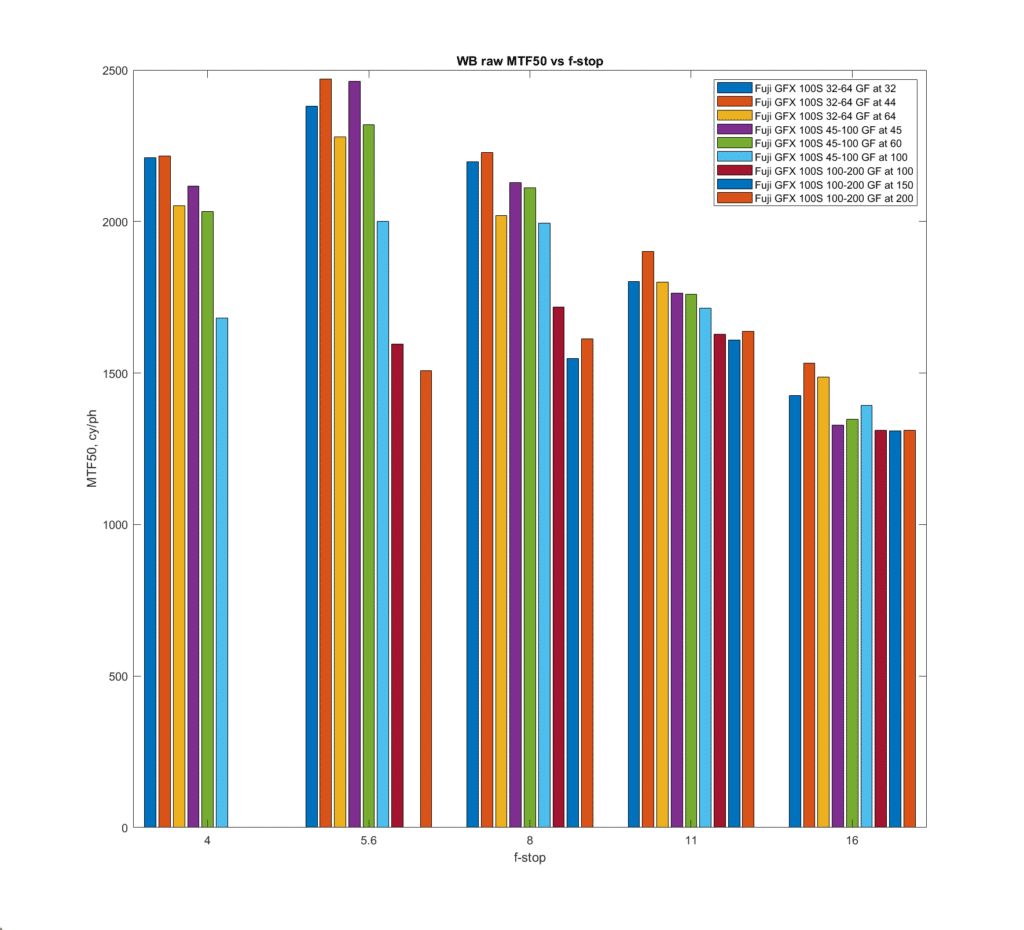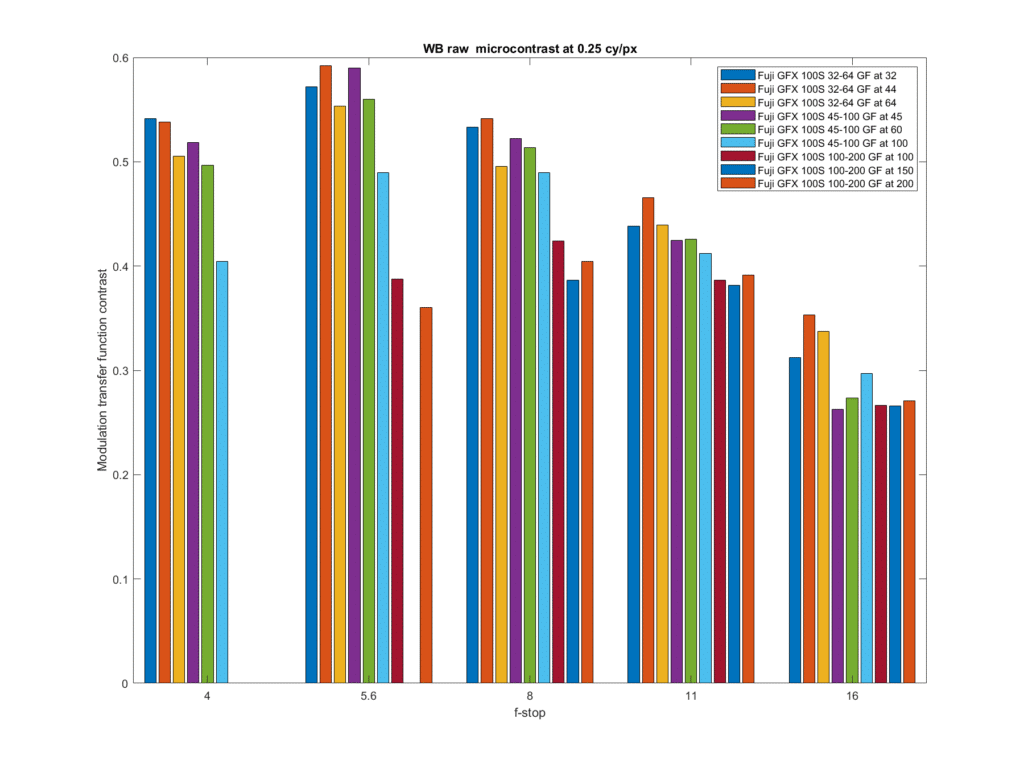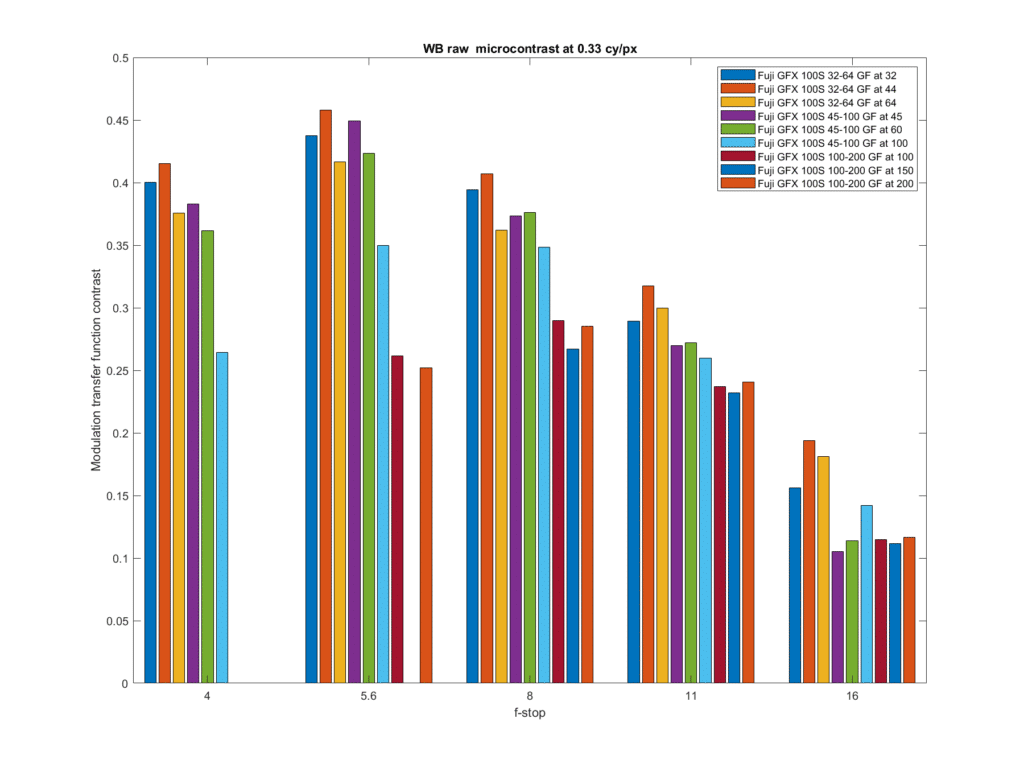This is one in a series of posts on the Fujifilm GFX 100S. You should be able to find all the posts about that camera in the Category List on the right sidebar, below the Articles widget. There’s a drop-down menu there that you can use to get to all the posts in this series; just look for “GFX 100S”. Since it’s more about the lenses than the camera, I’m also tagging it with the other Fuji GFX tags.
A few days ago, I posted microcontrast and MTF50 data for all the Fuji GF primes. Now I’ll do the same foe all the zooms.
I’ve shown you some complete MTF curves recently, and I’ll show you more. But when you are comparing many lenses, that’s just too much data to present clearly or to wrap your head around. There are two ways to simplify the MTF curve.
You can pick a contrast level, and measure the spatial frequency where that contrast occurs. The usual convention is to say MTFxx, where xx is the percent contrast. MTF50 is fifty percent contrast, or a 50% loss of contrast. MTF30 is 3o% contrast, or 70% loss of contrast. MTFxx is usually reported in cycles per pixel, cycles per millimeter, or cycles per picture height. The most useful metric for looking at a camera/lens system is cycles per picture height, or cy/ph.
You can pick a spatial frequency, and measure the contrast at that frequency. When the spatial frequencies are in the 0.2 to 0.4 cycles per pixel cy/px) region, the result is usually called microcontrast.
MTFxx is a good way to get a handle on the sharpness and detail possible in an entire photograph. Microcontrast is a good way to understand how a camera/lens system deals with detail that is nearly as fine as it can correctly record.
I’ve crunched the data that I’ve captured for all the Fujifilm GF prime lenses on a GFX 100S both ways.
MTF50, first:
Microcontrast at 0.25 cycles per pixel, which I prefer to 0.33 or 0.4 cycles per pixel:
And 0.33 cycles per pixel:
It’s amazing how well the 32-64 and 45-100 do.



Is the 32-64 a winner?
It’s a great lens, that’s for sure.